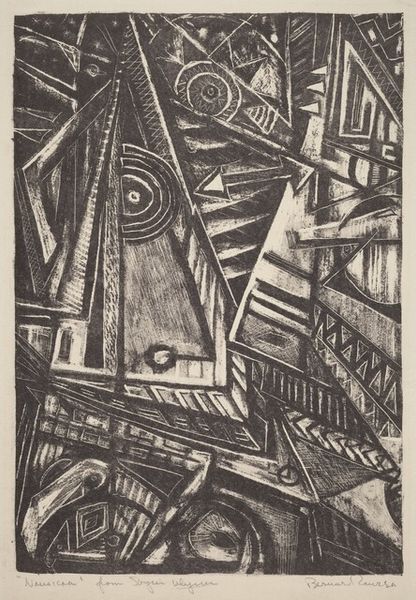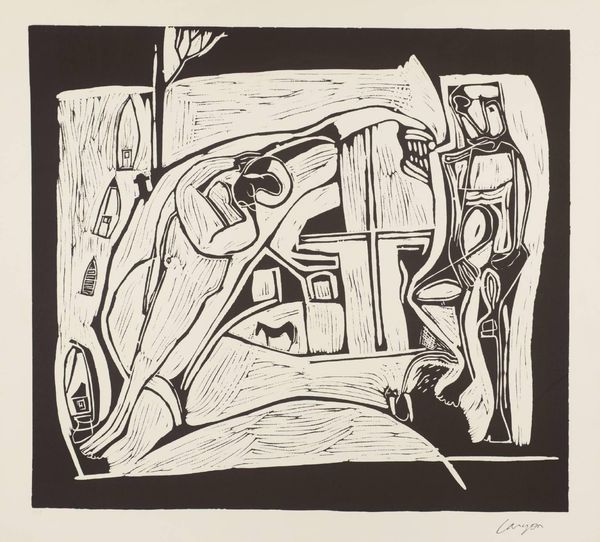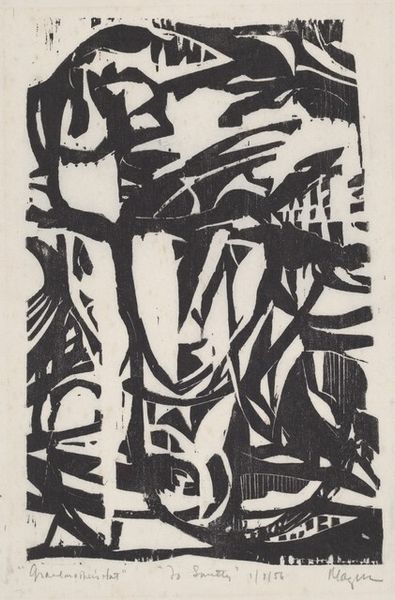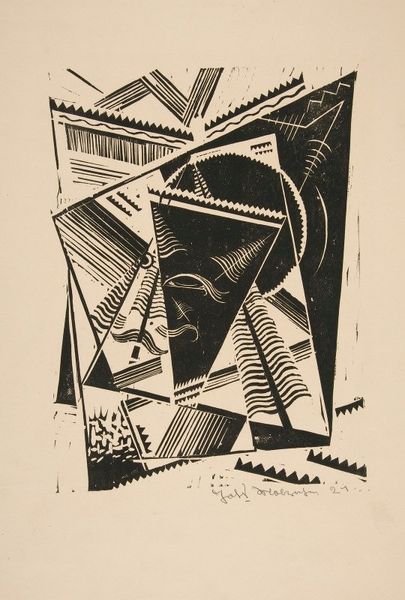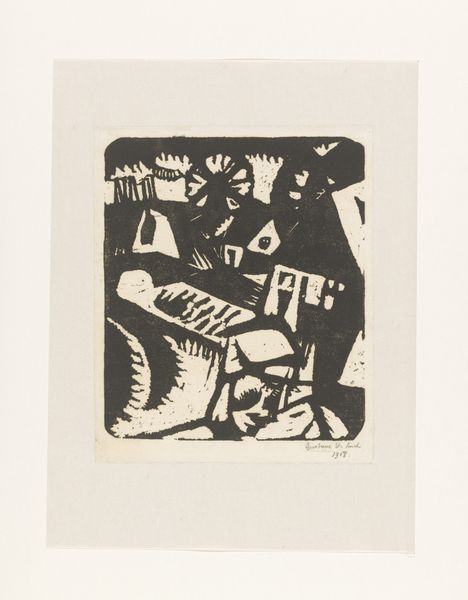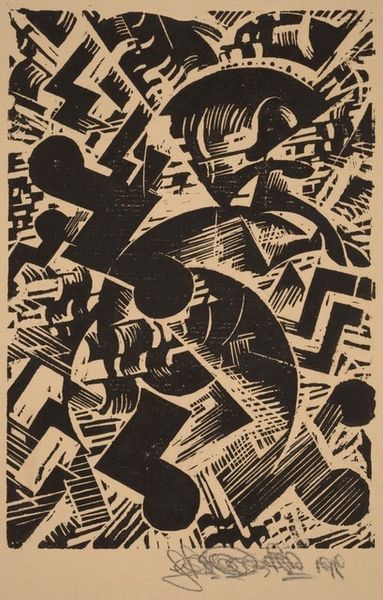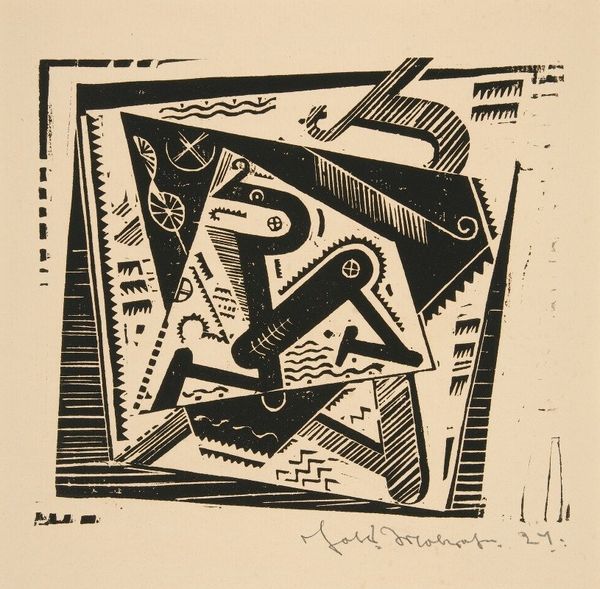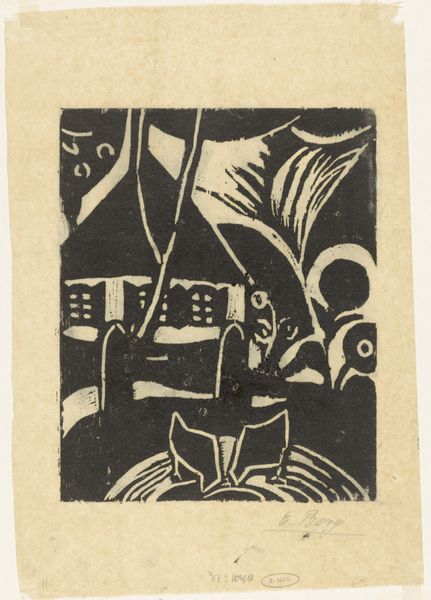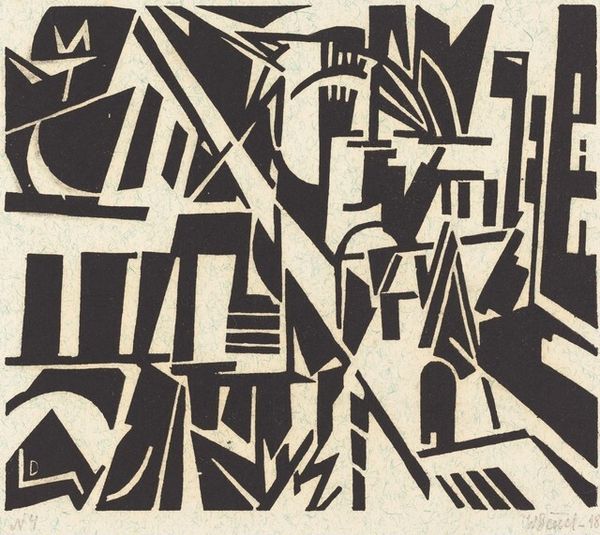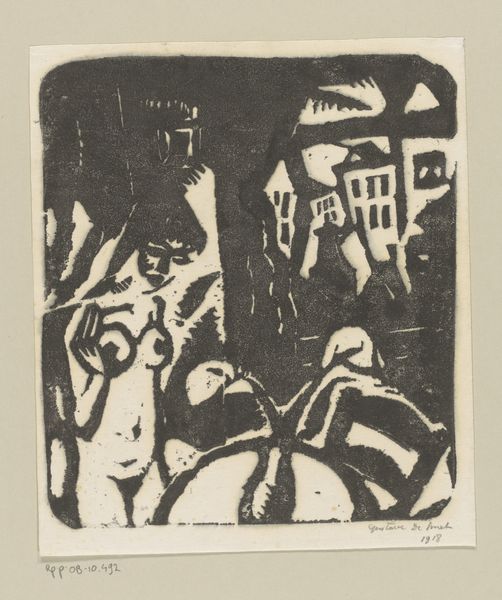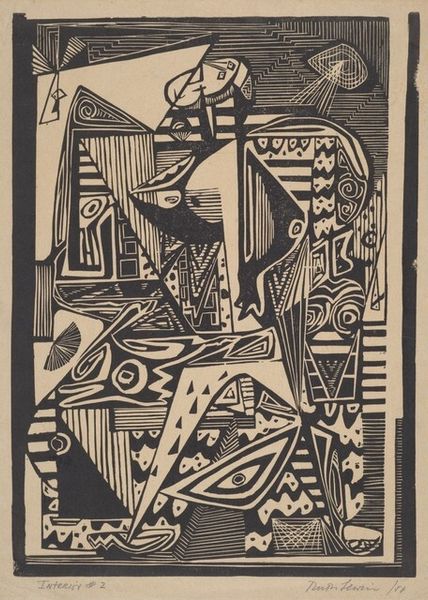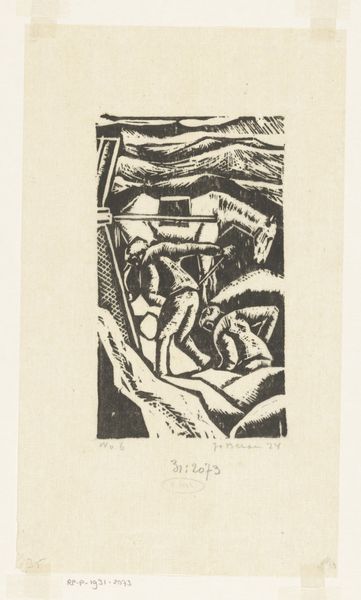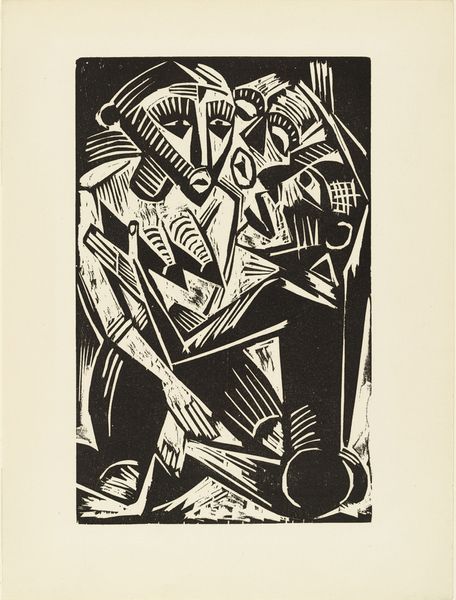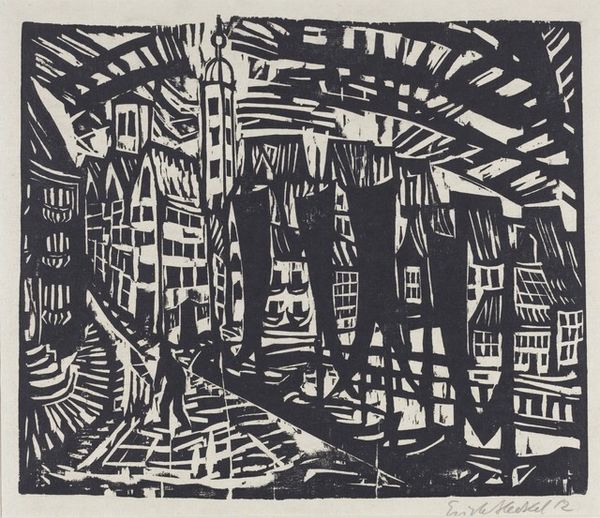
print, woodcut
# print
#
pen sketch
#
landscape
#
german-expressionism
#
abstract
#
form
#
ink line art
#
linework heavy
#
woodcut
#
abstraction
#
line
#
cityscape
Copyright: Public Domain: Artvee
Curator: Ernst Ludwig Kirchner created this striking woodcut, “Elisabeth-Ufer,” in 1913, capturing a scene from Dresden. Editor: It's immediately unsettling. The stark contrast of black and white, the jagged lines—it evokes a feeling of anxiety, a city on edge. Curator: Kirchner's engagement with urban spaces often reflects the tensions and anxieties of modern life, and indeed this area of Dresden had great symbolic value to him, being one of the spots where his artist collective, Die Brücke, gathered in the early 1900s. Editor: Those sharp, angular lines are what grip me. Notice how he flattens the perspective, collapsing the foreground and background. It's almost a cubist approach, abstracting the cityscape into pure form and line. It completely does away with traditional depth. Curator: Right. This compression of space is characteristic of Kirchner’s break from representational accuracy in favor of emotional expression, placing him within German Expressionism. Consider, too, the influence of the rapidly changing urban environment on his psyche and artistic choices, echoing themes explored by other artists of the movement. Editor: The absence of color heightens the drama, but it's also the very architecture of the print that grabs my attention: look how the lines intersect and create shapes that suggest buildings, trees, and perhaps a bridge, as the title suggests. But there is an unsettling level of simplification. Curator: The woodcut medium itself lent itself to the bold lines and stark contrasts, aligning perfectly with the Expressionist desire to cut through superficial appearances. Kirchner sought authenticity. This raw, direct style reflected a perceived truth about the world he was portraying: fragmented, disorienting, charged. Editor: So much is distilled into just line and form here, resulting in abstraction. It makes one contemplate the inherent visual elements themselves. It also reminds me that reduction to only the bare essentials makes for such impact. Curator: I agree completely. Looking back to “Elisabeth-Ufer," it reflects the societal and emotional climate of pre-war Germany, capturing its spirit of dynamism and apprehension. Editor: I’ve focused on the artwork's composition and how its formal properties communicate emotionality. Both views can unlock deeper insights into Kirchner's urban world.
Comments
No comments
Be the first to comment and join the conversation on the ultimate creative platform.
